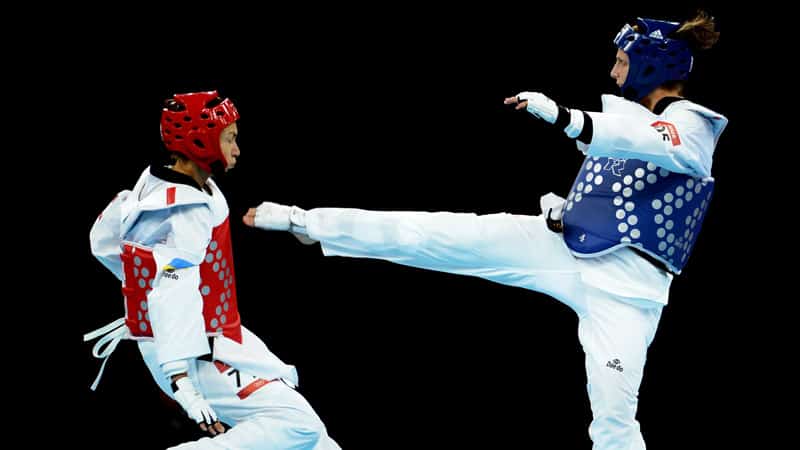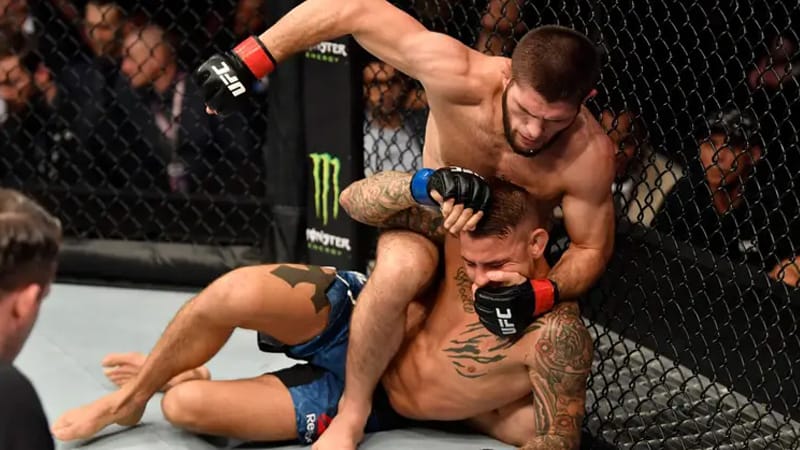Martial arts are one of the hobbies that not only improve your fighting skills but also enhance your life in many areas, including discipline, physical health, and humility leading to the worldwide increase in their usage in this age. The significant component of martial arts and the main reason they were created is for “self-defense”; however, it’s been transformed into a sport with the best fighters winning championships and medals for their efforts.
If you’ve been interested in knowing the best martial art for street fights and are trying to choose one to train, I’ve selected a comprehensive list of the best martial arts for self-defense and street fights ranked by their usefulness and effectiveness. This article will help you choose the art that is right for you and the most effective in potential street altercations, so if you’re interested in learning, read on!
10. Taekwondo

Taekwondo is based on its founder, Choi Hong Hi’s “Theory of Power.” This theory is a set of observations and ideas based on rational thinking and Newtonian physics, which Choi used to describe a martial art that is more effective than any other.
For instance, one of his observations was that a strike’s power increases quadratically with speed and only linearly with the moving object’s mass, leading up to him realizing that the muscle mass behind the strike isn’t as critical as speed. This led to the development of Taekwondo, an art based chiefly on kicks since the legs can deliver faster and heavier strikes than the arms.
Although this makes Taekwondo unique and practical, it’s also what causes it to be less effective than the other arts on this list in terms of street fights. Regarding street fights and self-defense, relying majorly on kicks seems unrealistic. A good jab may be more effective and valuable in a street fight than the strongest roundhouse kick taekwondo has to offer.
9. Combat Sambo

Developed around the 1920s in the USSR, Sambo is a Russian martial art created to improve the Russian military’s hand-to-hand combat skills. Although Combat Sambo looks quite interesting, a couple of problems with the art make it take the 9th spot on this list.
One of the significant issues with this art is that the Russian people make this art seem very special. To shed more light on this, one of the strongest militaries in the world has Sambo as their official combat system, giving the art an insanely good reputation. Besides this, most people who train in Sambo are Russian, Kazakhstan, or people from that area.
This doesn’t make the art racist or bigoted. However, Russia’s socio-economic status has been plaguing the art, making it wholly ordinary and almost necessary for people who practice it to be much more challenging than people from more comfortable western countries. This toughness and hardness translate into extreme discipline and determination in the gym and the ring, making Sambo a fantastic art.
8. Karate

It’s popularly believed that the world-famous karate originated in Japan. Contrary to this popular belief, this art creates by Okinawans. Although Okinawa is a part of Japan today, Okinawa was previously an independent country and is home to most of what we know in recent years as “Japanese martial arts.”
Karate is an umbrella term used to describe several styles and branches of art. The most popular types of Karate include Shotokan, Goju-Ryu, Kyokushin, Shito-Ryu, and many more. One reason why karate is rated far behind in this list is that its popularity allowed a large number of McDojos, which are superficial, ineffective, and watered-down Karate schools that majorly exist, to earn money and dish out belts without proper scrutiny.
7. Judo

Developed in Japan by Jigoro Kano, this art is considered among the country’s first organized, official martial arts. Jigoro Kano’s name became huge in the martial arts world due to this, and he went on to help found many formal Martial arts teaching centers, helping Judo reach international fame.
This art primarily comprises throws, locks, sweeps, and everything related to grappling. This unidimensionality is the biggest asset and biggest mistake of Judo. Grappling is an innately human method of fighting as it involves the arms and hands evolved to grasp and hold, not to strike, making it more natural.
If you double down on this fighting method, it will undoubtedly create a practical martial art; however, doubling down on one aspect of the human fighting ability may be a mistake when used for self-defense or street fights. In this case, judo doesn’t include any striking technique, which is very important during street fights and self-defense needs.
6. Boxing

Western boxing originated back thousands and thousands of years from ancient civilizations, where there wasn’t a specific time when boxing became mainstream. It’s one of the most intuitive ways humans fight, as it’s been done for millennia.
Boxing, as popularly known, is a punching-only martial art, and the punching is limited to a given belt line around the middle-lower part of one’s abdomen. What makes boxing very effective is also its major setback, its unidimensionality. It focused more on striking to such a great extent that it creates art around it while forgetting all other parts and functions of the human body.
In self-defense and street fights, boxing is effective since you’ll learn many different skills to an intense level, giving you a general understanding of how fighting works and how to knock out an opponent.
5. Wrestling

Western wrestling, popularly referred to as Greco-Roman Wrestling or French Wrestling, is a sport whose origins are traced back as far as 15000 years ago. It is a form of combat depicted in cave drawings suggesting that the joke may be as old as humans. Most famous UFC fighters had their careers start-up in wrestling, for instance, Daniel Cormier, one of the best heavyweights ever.
Wrestling is highly effective because of the speed at which takedowns are possible. Since there are no strikes in wrestling, all the types of takedowns practiced in wrestling gyms cover up for this. In a self-defense or street fight scene, wrestling is very effective since you can shoot for a double-leg takedown which can happen in the blink of an eye.
4. Muay Thai and Kickboxing

Although there are some significant differences, kickboxing is as effective as Muay Thai and is definitely in the same league, which is why they are used as a combo in this section. Muay Thai, also called Thai kickboxing or Thai boxing, is a martial art observed as a traditional way of using the entire body to fight in close-quarter combat developed by the people of Thailand.
Kickboxing, or American Kickboxing, dates back to the early 1970s when it was developed as a combination of martial arts. Since these arts are related, they are often regarded as one. However, Muay Thai is majorly seen as the traditional kind of kickboxing.
Muay Thai is the number one, undisputed striking art, making it very effective for self-defense and street fights—the artwork on clinches, kicks, and other unique factors.
However, regardless of which art form you choose, the right equipment is essential, and in kickboxing, much of your performance and safety depends on the gloves you wear, which you can learn more about in our top Kickboxing Gloves guide.
3. Jiu-Jitsu

This art is arguably the martial art with the steepest rise to fame since the primary founders passed away a few decades ago. Jiu-Jitsu is a highly effective martial art for self-defense since it doesn’t rely on chance, luck, and physical power but depends more on calculated technique and skill.
In a self-defense context, it’s believed that Jiu-Jitsu is more effective than any of the above martial arts because of its very effective takedown variants. Since the art focuses on takedowns instead of strikes, it’s easier to take down an opponent in self-defense, making this art rank higher than previous ones.
2. Krav Maga

This art is a military combat system designed to prepare people in the most challenging places to neutralize threats faster and more efficiently, hence why this art ranks second on this list. This is also the fighting system taught to the Israeli military, giving it a remarkable reputation.
What puts this art high on this list is its intuitiveness and realistic approach to self-defense scenarios. Krav Maga attacks the weak points on the parts of the body to neutralize the opponent as quickly as possible.
1. MMA

MMA is the most popular martial art of our time, and MMA has proven to be the best way to pressure-test different skills. MMA isn’t a singular entity since it’s a process within which the given individual tries their best to become the best all-around fighter meaning the art places a significant emphasis on striking, wrestling, grappling, and other areas of fighting that humans have come up with to present.
This well-roundedness is the exact reason why MMA tops this list. MMA isn’t restricted to unidimensionality like other arts listed above, as this art focuses on filling all the gaps in one’s fighting knowledge. In self-defense cases, MMA provides the basis of standard self-defense skill sets like stand-up fighting and grappling, which is virtually undefeatable in the street.

